Iranian anti-tank missile systems "Dehlaviye"
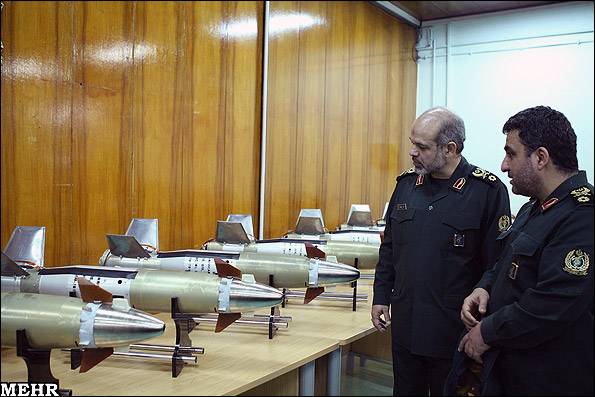
Dehlavie missiles of the first batch, 2012. Photo by Missilery.info
Iran's defense industry develops and manufactures various weapons, including anti-tank missile systems. One of the latest samples of this kind is the Dehlavie ATGM, first introduced at the beginning of the last decade. This product has high tactical and technical characteristics, and is also compatible with different platforms. In addition, it is known about the combat use of such complexes.
Own development
As follows from the available data, the promising ATGM was developed by the Aerospace Industry Organization by order of the Iranian Ministry of Defense. Work started no later than the end of the 1980s. The project was named "Dehlavie" - after the name of the city in the province of Khuzestan, where in XNUMX one of the major battles of the Iran-Iraq war took place.
At the beginning of the tenth years, the ATGM was tested and received a recommendation for adoption and launch of the series. In July 2012, at one of the UAP enterprises, in the presence of the leadership of the Ministry of Defense, a ceremony was held to launch production. It was then that the new complex and its components were first shown openly, and some features and characteristics were announced.
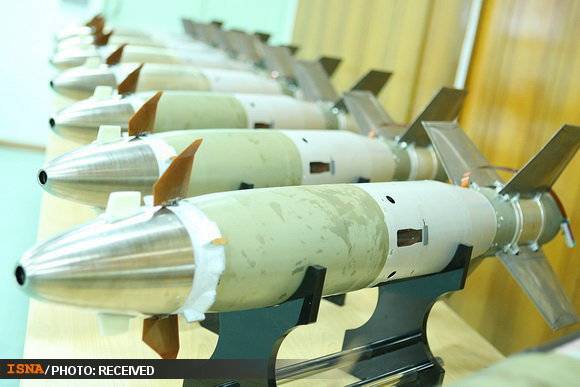
Close-up. Photo by ISNA
The design features and the characteristic appearance of the products shown led to the emergence of a version about the foreign origin of the Iranian anti-tank systems. It was assumed that the Russian Kornet complex could become the basis for it. However, Iran officially denied this version and drew attention to the significant differences between the two products. In addition, as far as is known, Russia has not yet licensed the production of Kornets to anyone.
In service
Serial production of "Dehlavie" started in 2012, and over the next few months, the first batch of anti-tank systems was supposed to get into the troops. Such weapon was supplied, first of all, to the Iranian army and the IRGC. It can be assumed that they ordered hundreds or thousands of complexes, as well as thousands of missiles.
The complexes are also produced for export, and such deliveries are carried out secretly and unofficially. So, by the middle of the tenth years, the Dehlavie anti-tank systems are in service with the Yemeni Houthis and other armed formations in the Middle East and Africa. The presence and use of such weapons was recorded in Yemen, in Syria, Libya and Iraq - everywhere where there were active hostilities. In addition, Iranian complexes were repeatedly intercepted by third countries at the stage of delivery to recipients.
Unfortunately, there is no exact information and statistics on the use of Dehlavie in hot spots. Probably, among the published photo and video materials from the combat zones there are also episodes of the use of such anti-tank systems, but it will not be possible to unambiguously identify them. At the same time, the declared tactical and technical characteristics allow us to expect high results of combat work.
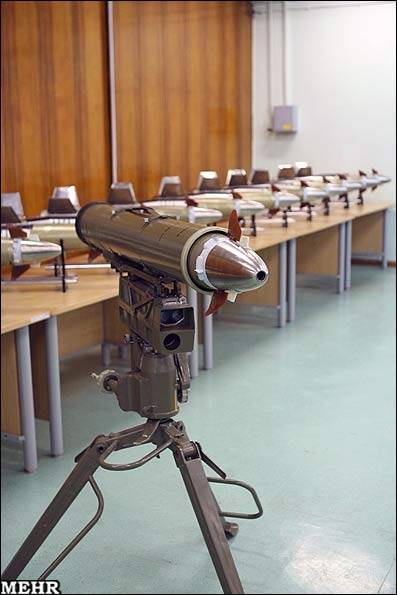
Launcher of the first version. For clarity, the rocket was partially withdrawn from the TPK. Photo Missilery.info
Technical features
The Dehlavie product is a portable or portable anti-tank missile system of a conditional second generation. It is designed to combat armored vehicles, other vehicles, structures or manpower of the enemy. To expand the range of tasks to be solved, work from different platforms is provided.
In terms of its architecture, Dehlavie does not differ from a number of other modern ATGMs, including the Russian Kornet. In the infantry wearable version, the complex includes a missile in a transport and launch container and a launcher with control devices on a tripod. The length of the ATGM in combat position exceeds 1-1,2 m, weight - more than 25 kg.
The Iranian-designed missile looks similar in appearance to the Russian 9M133 and its variants, but is said to have major differences. This product is over 1 m long with a diameter of approx. 150 mm. The rocket is made in a spindle-shaped body. There are rudders in the head part, folding X-shaped stabilizers in the tail. Steering machines and the leading charge of the warhead are hidden under the head fairing, the center contains the main charge and the engine, and the control system instruments are placed in the tail.
Dehlavie uses laser beam guidance. The launcher directs a beam at the target, the rocket follows it with the help of a tail optical unit and keeps it on a given trajectory. This guidance principle has well-known advantages in the form of noise immunity and the relative simplicity of the means used.
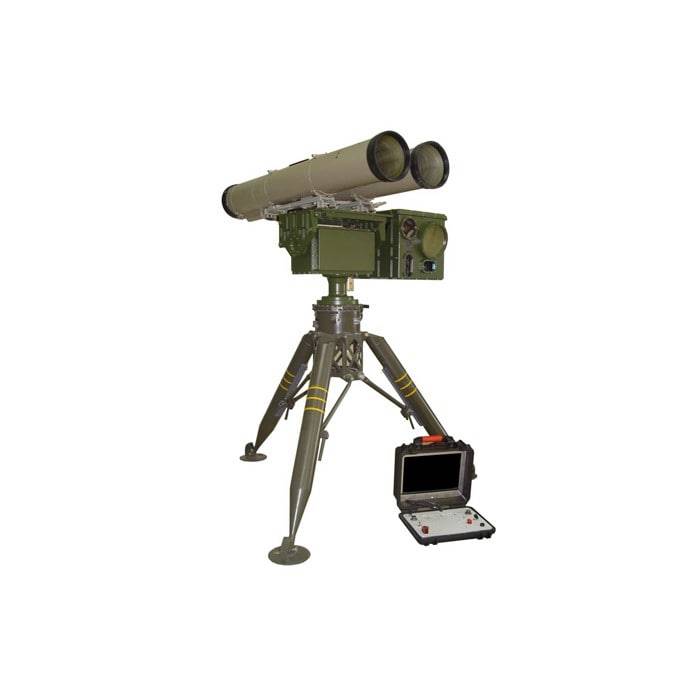
Upgraded version of the launcher with two missiles and remote control. Photo Telegram / ImpNavigator
The flight range is declared at the level of 5-6 km, which corresponds to the Kornet missiles of the first versions. Speed - high supersonic. A tandem cumulative warhead is delivered to the target at any range. Armor penetration - approx. 1 m behind dynamic protection.
In 2012, along with the rocket, the launcher of the first version went into production. She received only daytime optics and a semi-automatic control unit. The operator had to keep the aiming mark on the target, and all other tasks were solved by automation. In 2015, a new launcher was introduced with different optics, a remote control and mounts for two TPKs with missiles. In the future, both portable installations were modernized.
Launchers with or without tripods can be mounted on various vehicles. Also developed a special installation for the creation of self-propelled anti-tank systems "Piruz". It carries two TPKs and has a different optics unit. Drives are also provided, with the help of which the installation is retracted inside the carrier vehicle or extended into a combat position. Management is carried out remotely; the remote control is located at the operator's workplace in the cab.
Design potential
In general, the Iranian Dehlavie ATGM looks like a modern example of its class, capable of showing fairly high efficiency. According to the declared tactical and technical characteristics, it is not inferior to a significant part of foreign complexes, and some even surpass them. However, Iranian engineers do not yet have much experience in this area, and their complex lags behind advanced models - such as the latest modifications of the Russian Kornet.
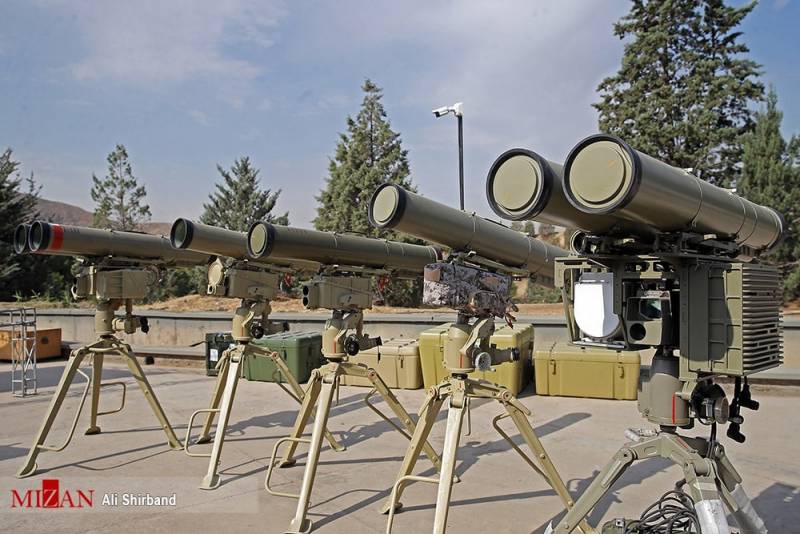
Different types of launchers. Photo Mizan Online
The Iranian development complex has acceptable dimensions and weight, and is also adapted for use in a wearable version or on platforms. All this has a positive effect on the issues of operation and application. In addition, the capabilities of the Dehlavie missile are expanded by the Piruz installation.
The Iranian-designed missile was built using solutions and ideas tested on the Russian 9M133. She flies at supersonic speeds, which shortens her attack time. The flight range reaches 5-6 km and exceeds the effective return fire distance of almost any enemy armored vehicle.
Semi-automatic targeting with laser guidance forces the operator to remain in position until the target is hit and leads to some risks. At the same time, this method of control drastically reduces the possible cost of the missile and anti-tank systems as a whole. In addition, "beam flight" is one of the best and most effective guidance methods in terms of reliability and noise immunity.
Used tandem cumulative warhead with a penetration of 1 m behind the remote sensing. This is quite enough to break through a wide range of frontal protection. tanks old models. In addition, we cannot exclude the possibility of defeat and modern MBT. At the same time, from other angles, the defeat of such a target is guaranteed.
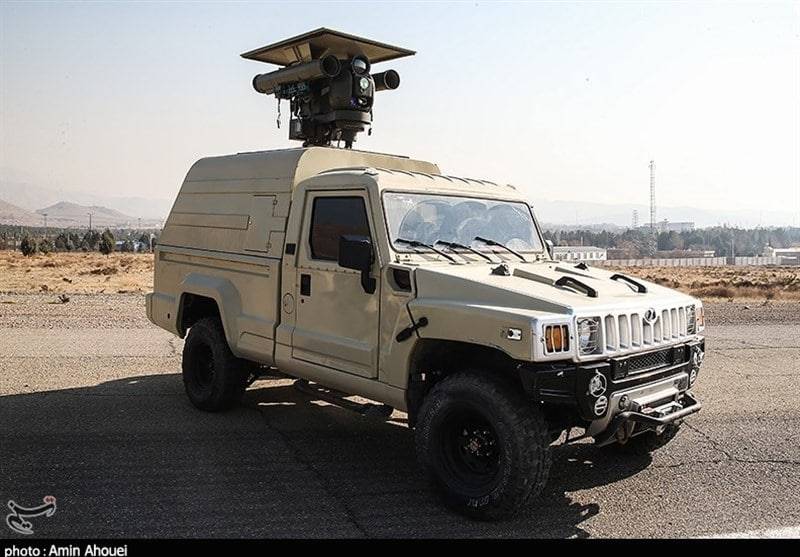
Launcher "Piruz" on an armored car. Photo Telegram / ImpNavigator
As practice has shown, the Dehlavie ATGM is quite simple to master. Such complexes entered service not only with a full-fledged army, but also with a number of armed formations with an appropriate level of training. Despite the lack of the necessary education and experience, the personnel of various militias successfully master and use anti-tank systems.
Demonstration of opportunities
Thus, at the turn of the XNUMXs and XNUMXs, the Iranian industry, using the accumulated experience and, probably, copying the advanced foreign developments, was able to create and bring to the series a completely modern Dehlavie ATGM. This product was adopted by their own units, and also began to be exported, and mainly to the structures conducting hostilities.
All this shows that already 10-12 years ago the Iranian industry had every opportunity to copy and rethink even the newest and most advanced foreign anti-tank systems. In addition, the necessary experience was accumulated for the independent development of such products. What will replace Dehlavie in the future is unknown. But this complex also coped with the tasks set in several hot spots at once and showed good results.
Information